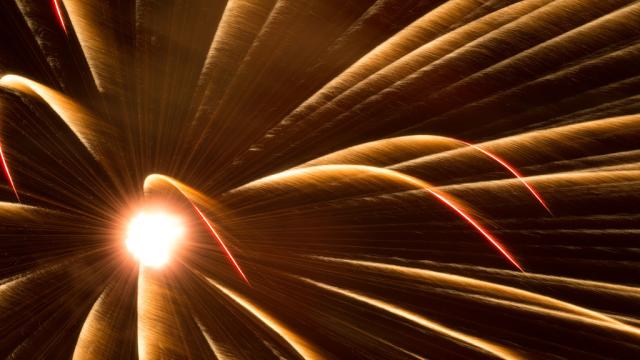Without an actual discovery, it can be difficult to convince us laypeople that there’s really such a thing as “dark matter.” It seems to interact with our universe solely through gravity, and no experiment has detected it here on Earth yet. So what if there’s an explanation to what’s causing the dark matter’s using physics that already exists, like Higgs bosons and black holes?
A team of three European physicists has made what could be seen as a controversial statement: “The existence of dark matter might not require physics beyond the standard model.” It’s still just a hypothesis as the hunt for dark matter continues, but it’s an interesting thought to digest.
First, you might be wondering what I’m talking about at all. You only experience regular matter in your day-to-day life – it’s what makes up every planet, star, and galaxy. But astronomical observations imply that there’s gravity from six times more matter in the universe, stuff we can’t see with our eyes or instruments, called dark matter. As of yet, lots of experiments have tried and failed to identify the source of this gravity.
Then there’s the Higgs boson, the long-sought particle and associated field that permeates the universe. The Higgs addresses some of the most fundamental questions in particle physics, like why some particles that should be massless actually have mass.
When scientists at CERN in Switzerland announced their discovery of the Higgs boson back in 2012, many theorists were specifically interested in the particles’ own mass. Their calculations, combined with the mass of another particle called the top quark, implied that the universe’s vacuum wasn’t its “ground state,” and might exist in a sort-of “metastable state.”
Basically, you’d assume that a vacuum is the minimum possible energy a thing can have. But if the universe was in a metastable state, then perhaps there’s a lower possible energy state that the vacuum is blocked from accessing.
But during the early universe, things weren’t stable. The leading theories suggest that in the split second after the Big Bang, the universe inflated at brain-meltingly fast speed. All this time, the weird behaviour occurring on the quantum mechanical realm of physics, where particles randomly pop into and out of existence, could have been magnified and sealed into the larger-scale structure of the universe.
The physicists behind this new theory performed some mathematical calculations based on how the tiny fluctuations of quantum mechanics would mess with the Higgs boson and its associated field during this inflationary period. Their result was that, eventually, there would be some leftover black holes in places where particles’ physical properties were subject to especially large changes. These primordial black holes would offer the extra mass necessary to explain where the dark matter is – it’s in these black holes. They might even offer an observable signature on the sky, and prove whether the Higgs field is stable or unstable.
Some physics theorists discuss another potential effect of this so-called Higgs vacuum instability – perhaps, one day, the universe could turn into that more-stable state, changing all of the laws of physics and potentially dismantling everything. That will not happen, despite fear-mongering headlines, as even the metastable state would remain stable for far longer than the current universe’s age. But perhaps the instability is important.
“If it turns out to be true that the Higgs vacuum instability is the production method for dark matter, then this means this instability would have been a vital part of what was needed for us to exist in the first place,” Clara Nellist, particle physicist and science communicator on the ATLAS experiment at CERN, told Gizmodo.
There’s been plenty of talk about invoking primordial black holes created in the universe’s first instant to explain the presence of dark matter, even though neither has been observed. But this theory would offer a explanation for dark matter without the need for discovering new particles. Indeed, lots of physics experiments, including the Large Hadron Collider, have been hunting for dark matter particles beyond the Standard Model, but haven’t found anything yet.
Sabine Hossenfelder, research fellow at the Frankfurt Institute for Advanced Studies, was harsh on the new paper. She said in a tweet that lumping speculations on top of one another decreases, rather than increases, the theory’s chance of being correct.
And there’s a lot of places this theory could fall apart. It’s true that the Standard Model continues to hold up to tests, but it’d be incredibly hard to prove that there is no new physics. Additionally, black holes have widely been ruled out as a potential source of dark matter, said Nellist; proving this theory would require finding the right kind of black holes in the same places where dark matter is expected to be. And further refining measurements of the top quark and Higgs boson masses might prove we actually live in a stable universe. Busting any of these criteria could send the theory out the window.
But our universe is weird, and there are many questions that need answering. Of course it would be nice if those answers didn’t require never-before-spotted physics to explain dark matter.
